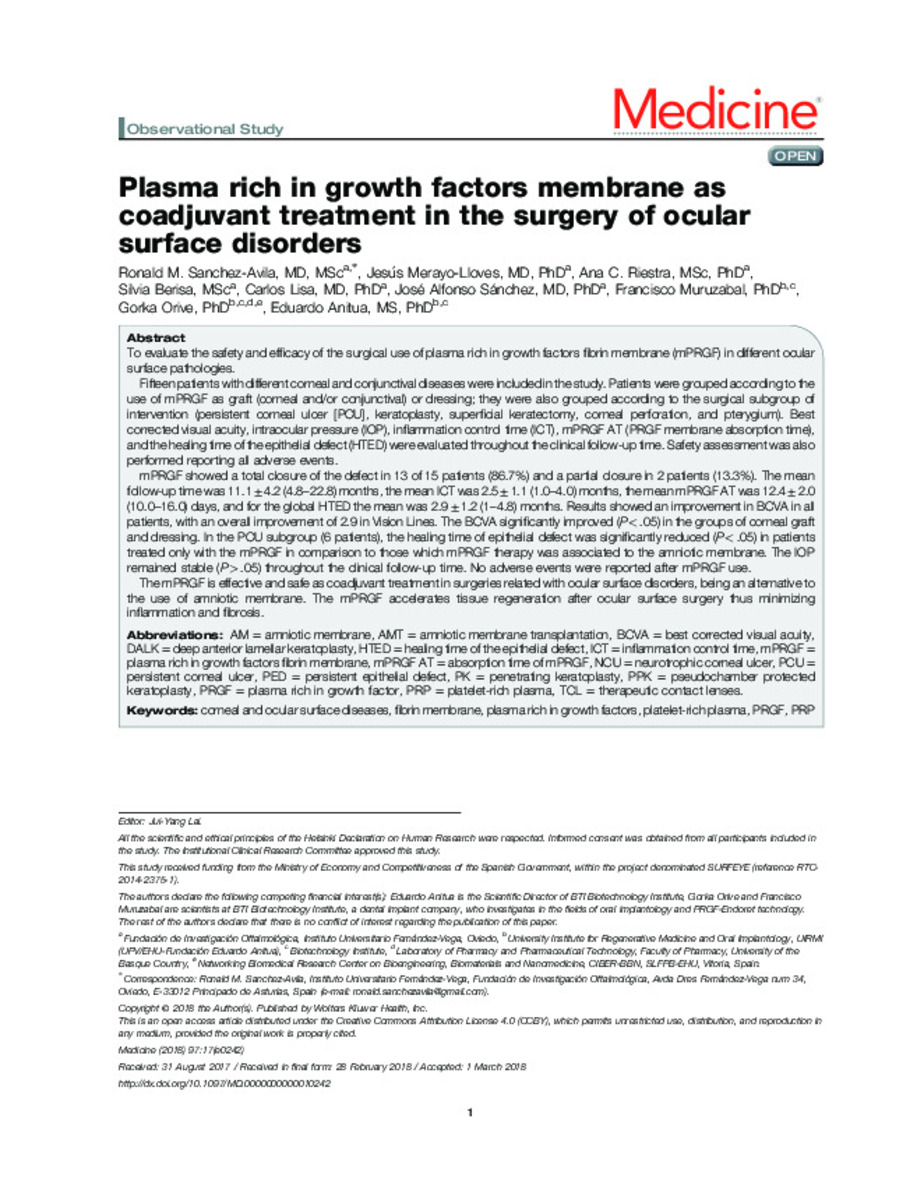Note:
This is an open access article distributed under the Creative Commons Attribution License 4.0 (CCBY), which permits unrestricted use, distribution, and reproduction in any medium, provided the original work is properly cited.
Citation:
Sanchez-Avila, Ronald M. MD, MSca,*; Merayo-Lloves, Jesús MD, PhDa; Riestra, Ana C. MSc, PhDa; Berisa, Silvia MSca; Lisa, Carlos MD, PhDa; Sánchez, José Alfonso MD, PhDa; Muruzabal, Francisco PhDb,c; Orive, Gorka PhDb,c,d,e; Anitua, Eduardo MS, PhDb,c. Plasma rich in growth factors membrane as coadjuvant treatment in the surgery of ocular surface disorders. Medicine 97(17):p e0242, April 2018. | DOI: 10.1097/MD.0000000000010242







